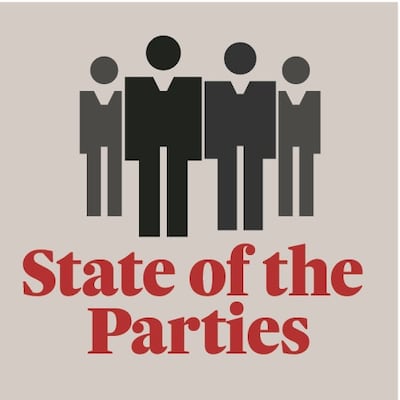
Fianna Fáil today feels a strengthening wind behind it. Perhaps not one that will bring it back to the days of yore when its hegemony was undisputed but certainly back to what it considers its natural place, at the top of the pile.
The party has partly learned the lesson of its own hubris and arrogance. It will not repeat past mistakes. Nevertheless, it is now confident enough to tiptoe back into subjects that were previously off-limits.
There was a taste of this in the past week, when its housing spokesman Barry Cowen called for a temporary tax relief for property developers to encourage more house-building.
It might very well have been the right message but given its own inglorious record when it comes to builders and developers Fianna Fáil might have been the wrong messenger.
Undoubtedly, it was a punt. But it was significant in that Cowen, but also others in Fianna Fáil such as Jim O’Callaghan, would not have dared to go there even two years ago.
Fianna Fáil has often been described as a national movement, not a party, and certainly not one that trades on any overriding ideal or belief. Its catch-all nature has always been evident.
Describing itself, the party says it represents the “mainstream of Irish life”; the only one that has “commanded overall majorities” and one that has “always been positive and never defeatist in its thinking”.
Founding values
Following the 2011 election, Fianna Fáil returned to founding values, modernising its 1926 “Corú”, but holding close to republican principles, citizen-centred policies, commitment to the Irish language, and unity by consent.
That shifted the party a little to the left, leaving it to lean heavily on a message of “decency” before the 2016 election. In truth, however, governing often means arch-pragmatism, shifting left or right as demanded.
In the past, it linked with the Progressive Democrats, Labour and the Greens. Does that diversity now extend to a deal with Sinn Féin? That's now a germane question.
Nobody, including Fianna Fáil itself, expected it to do so well in 2016. Sure, it still trailed Fine Gael but its recovery – especially in Dublin – was far ahead of where the party had put itself.
The recovery showed that there is still a large section of society which is emotionally or culturally Fianna Fáil, despite everything that has happened, even if it is not as big a grouping as in the past.
Now, Fianna Fáil hopes there are more who will return to the fold in the next election following the strange arrangements of the 32nd Dáil where the party is neither poacher, nor gamekeeper.
Its confidence-and-supply agreement with Fine Gael is slim. In truth, it reflects how much they have in common, illustrated by the agreement between the two over the Apple tax judgment, for example.
No red-line issues are discernible unless Fine Gael fails abjectly in delivery. The one stumbling block was water charges and that is no longer an issue, although Fianna Fáil’s shallow populism on the subject could cause problems in future.
Where is the party at now? It has a settled leadership and is no longer overly concerned about Leo Varadkar as Taoiseach. As one of its senior people puts it, modesty and decorum are the order of the day.
“We want a solid policy platform that’s not based on wild promises. The public have become wise to Greeks bearing gifts. The spin from Leo Varadkar may not stand the test of time.
"He is living in Facebook and Twitter and the high-octane media spin. Sure he's aiming at young voters but we still think there's a big group of traditional type voters out there," the source said.
Punished
So what is its strategy? It is adamant it is not going to pull the Government down in the next year because it sees itself being punished for doing so. Bar accidents, the earliest election, it reckons, would be after next year’s budget.
In coming months, it will focus on policies that will distinguish it from Fine Gael. New recruit Stephen Donnelly has done well on Brexit; Timmy Dooley is working on climate change.
Sure, there has been some jostling and showboating with Fine Gael – though Fianna Fáil buckled on water charges and on rent pressure zones in the face of Fine Gael brinkmanship.
So how will Fianna Fáil do? Polls have underestimated its support. It has far more potential to make gains than Fine Gael, with decent chances of extra seats in Cork North-Central, Clare and Limerick City.
The same goes for Limerick County, Galway West, Galway East, Longford-Westmeath, Wexford, Dún Laoghaire, Dublin Central, Dublin South-Central, Dublin South, and Dublin North-West.
It also has an outside chance of gains in five, or six more. The main casualties will be Independents, though it might poach one or two from Fine Gael. Against that, a few of its own second seats might be vulnerable.
Micheál Martin has been so adamantly opposed to a coalition with Sinn Féin that the idea is a political non-runner, particularly since his position as leader is so secure that he will not be challenged on this issue.
Nevertheless, it raises questions about how Fianna Fáil can make up the numbers. Even on a good day, the best they can hope for is to be the biggest party while remaining a country mile away from majority.
Martin is likely to be the next taoiseach, helped by a confidence-and-supply deal: an agreement with Fine Gael is likely, or at a stretch, a collection of smaller entities.









